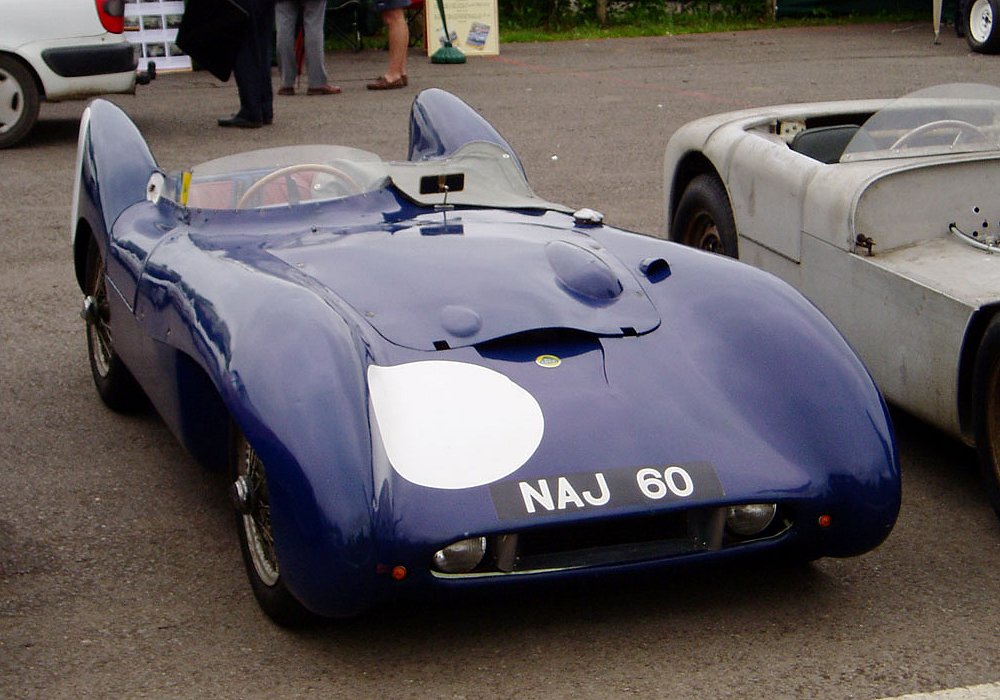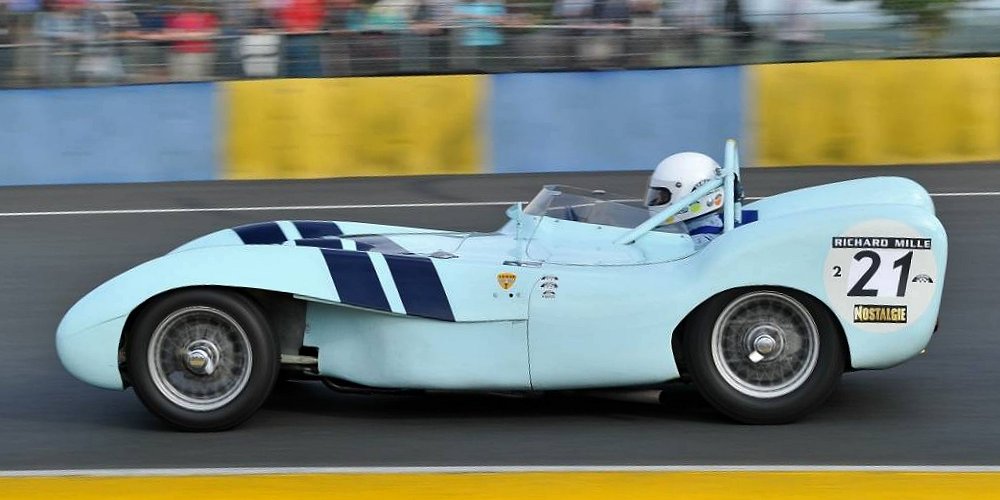Description
The Lotus Mark IX, often referred to as the Lotus Mk 9 Le Mans, was introduced in 1955 as a direct development of the pioneering Mark VIII. It represented Colin Chapman’s first serious attempt at building a car specifically intended for international endurance racing, including the 24 Hours of Le Mans. The Mk 9 embodied Chapman’s growing reputation as one of the most original engineering minds in post-war British motorsport, combining extreme lightness, aerodynamic efficiency, and a level of technical refinement rarely seen in small-displacement racing cars of the era. It was the car that established Lotus on the global stage and set the course for the company’s future dominance in both sports-car and Formula racing.
The Mk 9 retained the fundamental principles of its predecessor — a tubular spaceframe chassis and fully enveloping aerodynamic bodywork — but refined them in almost every respect. The chassis, designed by Chapman, was lighter, stiffer, and more compact, weighing under 30 kilograms yet providing remarkable rigidity. The body was again shaped by Frank Costin, an aerodynamicist from de Havilland, who applied aircraft design techniques to create an exceptionally smooth and efficient profile. The result was a car with a drag coefficient among the lowest of its time, characterised by a long, tapering nose, faired-in wheels, and a neatly rounded tail.
Power came from a range of small-displacement engines depending on customer preference and race regulations, but the most famous examples used the Coventry Climax FWA 1.1-litre all-aluminium four-cylinder engine. In Lotus tune, this lightweight and robust unit produced around 75 to 85 horsepower, which, in a car weighing little more than 450 kilograms, provided impressive performance. Other variants were fitted with MG or Ford-based engines, but the Climax-powered versions were the most advanced and competitive. The engine was mounted well back in the chassis for ideal weight distribution and paired with a close-ratio four-speed gearbox, usually sourced from MG or BMC.
The suspension layout was pure Chapman. At the front were double wishbones with coil springs and telescopic dampers, while the rear used a live axle located by trailing arms and a Panhard rod. Braking was initially by drums all round, though later cars experimented with early disc setups. The Mk 9’s balance, lightness, and aerodynamics gave it extraordinary cornering ability, and despite its modest power, it could reach top speeds approaching 125 mph — exceptional for a sub-1.5-litre sports-racing car in the mid-1950s.
The Mk 9 made its international debut at the 1955 24 Hours of Le Mans, entered by Lotus with Colin Chapman and Ron Flockhart as drivers. It was the company’s first appearance at the legendary race. The car performed impressively, proving quick and efficient in the early stages before a mechanical issue forced retirement after 10 hours. Despite this, the Lotus effort drew widespread attention: the tiny, under-powered car had been keeping pace with larger and more powerful entries through sheer efficiency and handling finesse. The performance validated Chapman’s design philosophy — that lightness, aerodynamics, and agility could overcome brute power — and cemented Lotus’s reputation as a serious racing constructor.
Following Le Mans, the Mk 9 went on to enjoy a successful competition career in private hands. Cars were sold to enthusiastic amateur racers throughout the UK and Europe, many of whom achieved class victories in national events. The car’s ease of maintenance, mechanical simplicity, and predictable handling made it an ideal choice for club racing, and it quickly gained a reputation as one of the best small sports-racers of its day. The design would go on to influence later Lotus models, including the Mark 10 and 11, which continued to refine the same formula for both road and track.
Aesthetically, the Lotus Mk 9 captured the elegance of 1950s British sports-racing design. The low, flowing body sat tightly over the narrow chassis, with minimal frontal area and a cockpit just large enough to fit the driver and necessary instrumentation. The car’s proportions were dictated entirely by aerodynamic function rather than stylistic excess, giving it a purposeful yet graceful appearance.
Today, the Lotus Mk 9 Le Mans is recognised as one of the most important early Lotus racing cars. It marked the company’s first participation in endurance racing at an international level and set the foundation for decades of engineering innovation that would lead to global success in Formula One and sports-car competition. Few examples were built — estimates range between nine and twelve cars — and surviving models are highly prized by collectors for their rarity, purity of design, and direct connection to the formative years of the Lotus legend.
In every respect, the Lotus Mark IX exemplified Colin Chapman’s guiding principle that “performance through lightness” was the true path to speed. It was a small, elegant, and brilliantly engineered machine that outperformed expectations and announced Lotus to the world as a name synonymous with innovation, precision, and uncompromising pursuit of efficiency on the racetrack.


